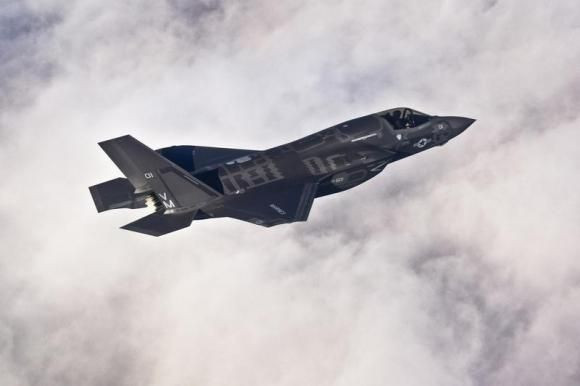$1 Trillion Lockheed Martin F-35C Makes Historic Landing On USS Nimitz

The Lockheed Martin F-35 hit a milestone Monday, making its first landing on an aircraft carrier, to begin two weeks of developmental testing. The F-35C, the version designed for the U.S. Navy, is one of three models -- the A is a standard takeoff and landing version designed for the Air Force, while the Marine Corps' B version is conceived to take off and land vertically on the smaller aircraft carriers from which the Marines operate.
The F-35C was redesigned after initial problems with the tailhook prevented it from engaging the wire that stops airplanes landing on carriers.
The Navy announced in a tweet the first arrested landing, aboard the USS Nimitz, was successful. Testing was taking place off San Diego after the new tailhook, the primary difference between the Navy and Air Force models, was rigorously tested on land.
Mike Rein, spokesperson for Lockheed Martin, said the company would support the Navy throughout the testing. "It will be another milestone for the program and for the Navy's plans to declare an initial operational capability," he said.
The aircraft is one of the three models developed for eight partner countries and three foreign governments as part of a project expected to cost more than $1 trillion, the costliest military procurement program ever. The U.S. military expects to purchase 2,457 F-35s in all.
However, the aircraft has had its fair share of critics since it was conceived in the mid-1990s. In addition to being around four years late on the expected date of operational readiness, many of the partner countries that were meant to share the cost with the U.S. taxpayer have scaled back their orders, citing budgetary constraints as the main reason.
And in 2013, the whole fleet was grounded because of safety concerns, specifically a crack in an engine turbine blade, which was eventually determined to be a one-off. The fleet was grounded again last June after the engine of an Air Force jet caught fire.
The Navy is expected to declare operational readiness after the other services, sometime between 2018 and 2019, with the Marine Corps expecting to have its F-35s ready in July 2015 and the Air Force aiming for August 2016.
© Copyright IBTimes 2025. All rights reserved.






















